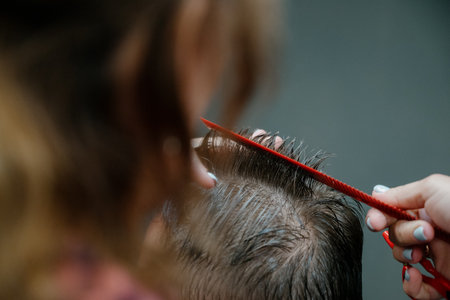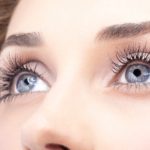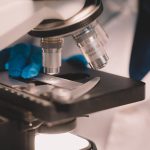1. Understanding PRP Therapy for Hair Loss
What Is Platelet-Rich Plasma (PRP) Therapy?
Platelet-Rich Plasma (PRP) therapy is a non-surgical treatment that uses a patient’s own blood to stimulate hair growth. This procedure involves drawing a small amount of blood, processing it to concentrate the platelets, and injecting the PRP into the scalp. The growth factors in platelets help promote hair follicle health and encourage natural hair regrowth.
How Does PRP Work for Hair Loss?
The effectiveness of PRP therapy lies in its ability to enhance the function of weakened hair follicles. When injected into the scalp, PRP releases growth factors that improve blood circulation and cell regeneration, leading to stronger and healthier hair. It is particularly beneficial for individuals experiencing early-stage hair thinning or androgenetic alopecia (male or female pattern baldness).
The Role of PRP in Hair Restoration
PRP therapy is often used as part of a comprehensive approach to hair restoration. While it may not be a standalone solution for severe hair loss, it can be combined with other treatments like medications or hair transplants for enhanced results. Below is an overview of how PRP compares to other common hair loss treatments:
| Treatment | Method | Best For | Invasiveness |
|---|---|---|---|
| PRP Therapy | Blood-derived injections | Mild to moderate hair thinning | Minimally invasive |
| Minoxidil (Rogaine) | Topical application | Early-stage hair loss | Non-invasive |
| Finasteride (Propecia) | Oral medication | Male pattern baldness | Non-invasive |
| Hair Transplant | Surgical procedure | Advanced hair loss | Invasive |
2. Key Factors That Determine a Good Candidate
PRP (Platelet-Rich Plasma) therapy for hair loss is not a one-size-fits-all solution. Several factors influence whether someone is a good candidate for this treatment. Understanding these key criteria can help determine if PRP therapy is the right choice for you.
Age and Hair Loss Stage
Age plays an important role in PRP therapy effectiveness. Younger individuals experiencing early-stage hair thinning tend to respond better to treatment compared to those with advanced hair loss.
| Age Group | Suitability for PRP Therapy |
|---|---|
| 20s – 40s | Best candidates, as hair follicles are still active |
| 50s and above | May see limited results if significant follicle miniaturization has occurred |
Hair Loss Pattern and Type
The pattern and cause of hair loss also impact PRP’s effectiveness. Those with androgenetic alopecia (male or female pattern baldness) often see positive results, while individuals with scarring alopecia or complete baldness may not benefit as much.
Best Candidates Based on Hair Loss Type:
- Mild to moderate androgenetic alopecia: Ideal candidates as follicles are still present.
- Alopecia areata: Some cases may respond well, but results vary.
- Dormant but not completely lost hair follicles: More likely to experience regrowth.
Overall Health and Lifestyle Factors
Your overall health and lifestyle choices significantly affect the success of PRP therapy. Since the treatment relies on your bodys natural healing abilities, having good overall health is essential.
Candidates Who May See Better Results:
- No underlying medical conditions affecting hair growth: Conditions like uncontrolled diabetes or autoimmune diseases may reduce effectiveness.
- A healthy diet and active lifestyle: Proper nutrition supports stronger hair regrowth.
- No smoking or excessive alcohol consumption: These habits can slow down healing and reduce results.
No Severe Scalp Conditions
If you have an active scalp infection, severe psoriasis, or chronic inflammation, PRP therapy might not be recommended until those issues are treated. A healthy scalp provides the best foundation for successful treatment.
Your Expectations Matter
Candidates with realistic expectations about PRP therapy will have a better experience. PRP can improve hair thickness and slow down shedding, but it won’t restore a full head of hair in cases of extensive baldness.
![]()
3. Who Benefits the Most from PRP Therapy?
Platelet-Rich Plasma (PRP) therapy has gained popularity as a non-surgical option for hair restoration, but it’s not a one-size-fits-all solution. Understanding who benefits the most can help set realistic expectations and improve treatment outcomes.
Best Candidates for PRP Therapy
PRP therapy works best for individuals experiencing specific types of hair loss. Below are the key groups who may see the most benefit:
| Candidate Type | Why PRP Works Well |
|---|---|
| Individuals with Androgenetic Alopecia (Male & Female Pattern Baldness) | PRP helps slow hair thinning and stimulates dormant follicles, especially in early to moderate stages. |
| People with Early-Stage Hair Thinning | Those noticing gradual hair thinning rather than complete bald spots often respond well to PRP. |
| Patients Seeking a Non-Surgical Solution | If you want to avoid invasive procedures like hair transplants, PRP offers a minimally invasive alternative. |
| Individuals with Recent Hair Loss | The sooner PRP is used after hair loss begins, the better the chances of regrowth. |
| Those Without Severe Balding or Scarring Alopecia | PRP is less effective on completely bald areas or scarring-related hair loss conditions. |
When Is PRP Less Effective?
While PRP therapy offers great potential, it may not provide significant results for everyone. It tends to be less effective for individuals with long-term baldness, severe alopecia, or those with medical conditions that prevent hair regrowth.
Factors That May Limit PRP Effectiveness:
- Advanced Hair Loss: If hair follicles have been inactive for too long, they may not respond well to treatment.
- Certain Medical Conditions: Autoimmune diseases or hormonal imbalances may interfere with hair regrowth.
- Poor Overall Health: Nutritional deficiencies and high stress levels can impact treatment success.
- Lifestyle Factors: Smoking and excessive alcohol use can reduce the effectiveness of PRP therapy.
The Importance of Early Intervention
The best results from PRP therapy come when treatment begins in the early stages of hair loss. If youre unsure whether youre a good candidate, consulting with a medical professional specializing in hair restoration can help determine if this treatment is right for you.
Key Takeaway:
If you have early-stage androgenetic alopecia or mild to moderate hair thinning, PRP therapy may help stimulate new growth and slow down further loss. However, managing expectations and understanding its limitations is crucial for achieving the best possible outcome.
4. Who Might Not Be a Suitable Candidate?
While PRP therapy has shown promising results for many individuals experiencing hair loss, it may not be the right solution for everyone. Several factors can limit the success of this treatment, including the extent of hair loss, certain medical conditions, and lifestyle choices.
Advanced Baldness
PRP therapy works best for individuals in the early stages of hair thinning or mild to moderate hair loss. If a person has extensive baldness with little to no active hair follicles remaining, PRP is unlikely to produce significant regrowth.
| Hair Loss Stage | Suitability for PRP |
|---|---|
| Early-stage thinning | Highly suitable |
| Moderate hair loss | May see improvement |
| Advanced baldness | Less likely to respond |
Certain Medical Conditions
Candidates with specific medical conditions may not be ideal for PRP therapy. Individuals with blood disorders, platelet dysfunction syndromes, chronic skin diseases affecting the scalp, or those undergoing chemotherapy may not see effective results. Additionally, people with autoimmune conditions like lupus or alopecia areata may experience unpredictable outcomes.
Medical Conditions That May Limit PRP Effectiveness:
- Blood disorders: Conditions like thrombocytopenia (low platelet count) can reduce PRP effectiveness.
- Cancer treatments: Patients undergoing chemotherapy or radiation may not benefit from PRP.
- Alopecia areata: An autoimmune condition that causes patchy hair loss and may not respond well to PRP.
- Lupus and other autoimmune diseases: These conditions can affect the body’s ability to regenerate hair.
- Seborrheic dermatitis or scalp infections: Active scalp conditions can interfere with treatment results.
Lifestyle Factors
A persons lifestyle can also play a role in determining whether they are a good candidate for PRP therapy. Smoking, excessive alcohol consumption, poor diet, and high stress levels can negatively impact treatment outcomes by reducing overall scalp health and limiting the regenerative effects of PRP.
Lifestyle Habits That Can Affect PRP Results:
- Smoking: Reduces blood circulation and slows healing.
- Poor nutrition: Lack of essential vitamins and minerals can weaken hair growth potential.
- High stress levels: Chronic stress contributes to hair shedding and weakens follicles.
- Lack of scalp care: Unhealthy scalp conditions can hinder the benefits of PRP therapy.
The Importance of a Consultation
If youre unsure whether PRP therapy is right for you, consulting with a qualified specialist is essential. A professional evaluation will help determine if your specific condition and lifestyle align with the potential benefits of this treatment. In some cases, alternative treatments like medications, laser therapy, or hair transplant procedures may be recommended instead.
5. Expert Recommendations for Best Results
For those considering PRP therapy for hair loss, experts suggest several ways to optimize treatment results. From determining the right frequency of sessions to incorporating complementary therapies and following essential post-care steps, here’s what medical professionals recommend.
Treatment Frequency: How Often Should You Get PRP Therapy?
The success of PRP therapy often depends on the consistency of treatments. Experts generally recommend an initial series of sessions followed by maintenance treatments.
| Phase | Recommended Frequency |
|---|---|
| Initial Treatment Phase | Once a month for 3-4 months |
| Maintenance Phase | Every 4-6 months, depending on individual response |
Complementary Therapies to Enhance PRP Results
PRP therapy can be even more effective when combined with other hair restoration treatments. Here are some expert-recommended options:
- Topical Minoxidil: Applying minoxidil alongside PRP may help stimulate hair growth.
- Low-Level Laser Therapy (LLLT): Laser devices can enhance blood flow to the scalp and support PRP benefits.
- Nutritional Supplements: Biotin, vitamin D, and iron supplements can improve hair health.
- DHT Blockers: Medications like finasteride can reduce hair loss by blocking the hormone responsible for follicle shrinkage.
Post-Treatment Care: Tips for Maintaining Hair Growth
The way you care for your scalp after PRP therapy can impact your results. Experts provide the following guidelines:
Avoid Washing Your Hair Immediately
Avoid washing your hair for at least 24 hours after treatment to allow the PRP to fully absorb into the scalp.
Avoid Harsh Chemicals and Heat Styling
Avoid using harsh shampoos, dyes, or heat-styling tools for a few days after treatment to prevent irritation.
Nourish Your Scalp with Proper Nutrition
A diet rich in protein, healthy fats, and essential vitamins can support hair regrowth and maintain strong follicles.
Follow Up with Your Provider
Your specialist may adjust your treatment plan based on progress, so attending follow-up appointments is crucial.


